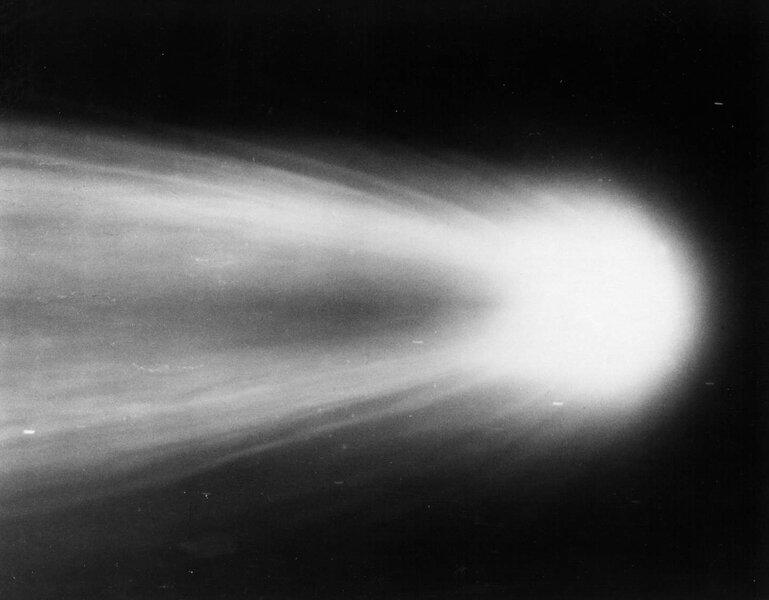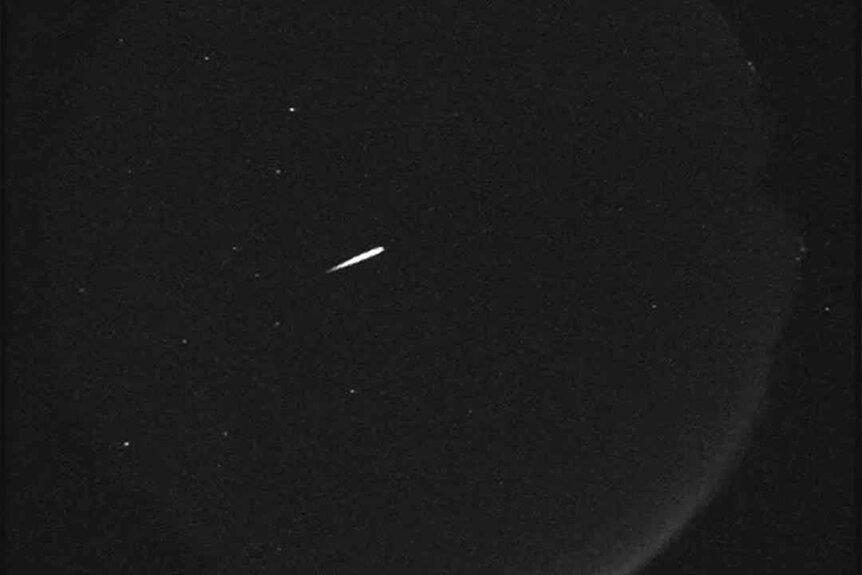Everything You Need to Know About the Orionid Meteor Shower

When the extraterrestrial known as Dr. Harry Vanderspeigle first arrived on Earth in SYFY’s Resident Alien (streaming now on Peacock), a lightning strike turned his ship into a burning streak across the sky.
Anyone looking up that night might have seen little more than a shooting star, not knowing the truth of what they were seeing. If Harry or any other alien wanted to sneak in unnoticed, they might target their approach during a meteor shower like the Orionids.
Where the Orionid Meteor Shower Comes From

Comet Halley, seen in 1910. Credit: NASA/JPL-Caltech
Like other meteor showers, the Orionids take their name from the constellation they appear to radiate from. In this case, the shower appears to come from a point near the constellation Orion. In truth, they don’t come from Orion or any of its stars at all. Instead, the meteor shower is the result of leftover debris from Halley’s Comet.
Famous for being the first comet to have its orbit calculated and return predicted, Halley’s Comet swings back by the Earth every 76 years or so. The last time it came was 1986 and it won’t be back until 2061, but every time the comet passes through our neck of the woods it leaves a little bit of itself behind.
RELATED: Newly Discovered Comet Nishimura Won't Be Back for 435 Years
Comets are well known for the tails they drag behind them, made of little bits of gas and dust knocked off the comet as it whips around the Sun. The heart of the comet moves on along its orbit, but the trail gets left behind like cosmic breadcrumbs leading the way home. Those cometary bits remain in place, intersecting our orbit even when Halley is way out in deep space, and we pass through them every year in mid-October.
How to See the Orionid Meteor Shower

Orionid meteor captured October 2015 Photo: NASA/JPL
If you want to catch the Orionids, there’s no need to wait. The show started on September 26, and will continue through November 22. You can go outside on a dark, clear night, wait a little while for your eyes to adjust, and wait for the show to start. Your best bet, however, will be the weekend of October 21 and 22, when the shower hits its peak.
RELATED: New Observations Reveal the Bizarre Origin of the Asteroid Phaethon and the Geminids Meteor Shower
Orion will rise before midnight, bringing the meteor shower with it, and reach its highest point in the sky around 2:00 a.m. The Moon will be at First Quarter phase (half full) but, fortunately, it will set around midnight leaving dark skies for stargazers. At peak, you’ll be able to see a meteor every 2 to 3 minutes, for an average of 23 per hour.
Those bits of cometary breadcrumb unfortunate enough to come into contact with the atmosphere will streak across the sky at 148,000 miles per hour, burning up along the way. The heat created from impacting the atmosphere draws bright lines across the sky which sometimes persist for minutes before finally fading. And if any of those shooting stars happen to be alien spacecraft, who needs to know?
Catch the first two seasons of Resident Alien, streaming now on Peacock!

